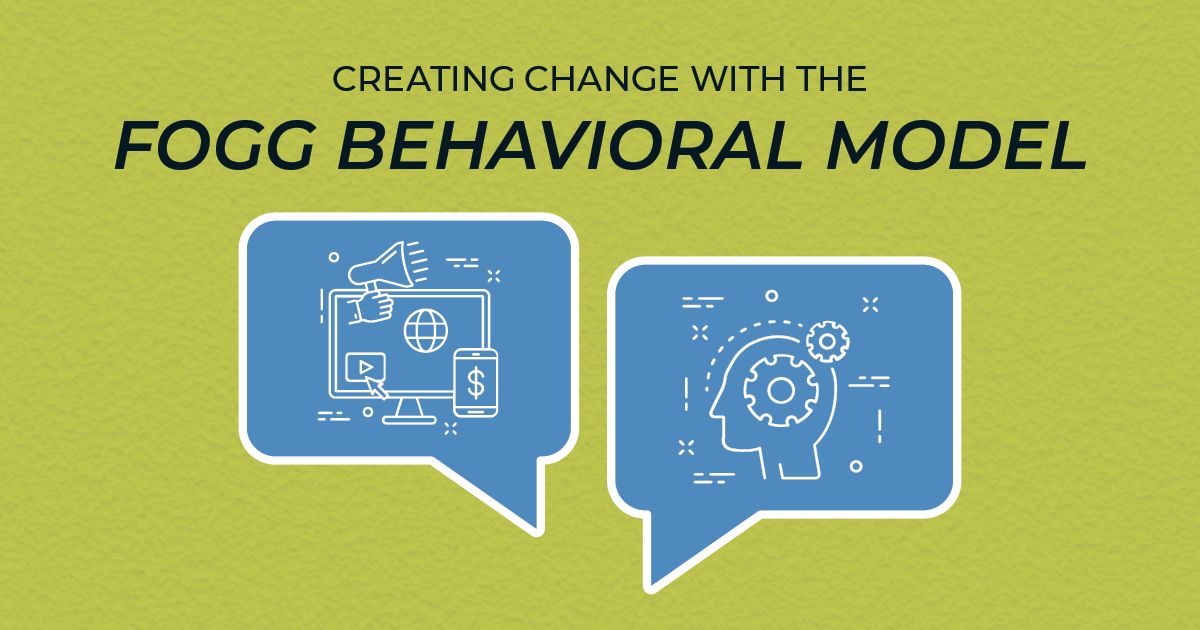As a change agency, our clients come to us looking to make a change, whether it’s strengthening their brand or launching a new initiative. In a perfect world, they’d like to see those changes manifest themselves right away.
Unfortunately, there isn't a quick-fix advertising trick that can instantly change the way your audience thinks about your organization, brand, or product and compel them to take the action you want them to. After all, we humans are complex. Although marketers love to categorize people by age, gender, ethnicity, income, interests, and a multitude of other variables, there’s more to our thoughts and behaviors than what Census data descriptions, focus group conversations, and survey results can tell us.
A combination of factors, including emotion, physiology, environment, past experiences, and future goals are what motivate us to change how we think and act. Social psychologists use a variety of behavior models and behavior changes theories to study and better understand these factors. At LMD, we tend to lean on the Fogg Behavior Model as a framework for creating change.
The Fogg Behavior Model (FBM) was conceived by behavior scientist, author, TED-talker, and founder and director of Stanford’s Behavior Design Lab, BJ Fogg. Fogg attained rock-star status as an expert and thought-leader in the field of user experience, consulting with companies like Google to identify ways to persuade people via mobile apps.
FBM is an elegant model that breaks down effective behavior change into a simple equation: B = MAT. “B” stands for behavior, and MAT stands for “motivation + ability + trigger.” To achieve the desired behavior, you must have the other three components simultaneously—all must be present at the same time. Further, the trigger (or prompt) must a be a “hot” trigger, or one that can easily be acted upon.
Essentially, FBM dictates that if motivation is high, someone will be willing to do something—or change their behavior—even when their ability is low if they’re given the appropriate trigger. Likewise, if a behavior is easy to do, ability is high, but motivation is low, the person may still make a change—assuming they get the right trigger.
So how can you use FBM to your advantage? What are the keys to giving your audiences the motivation, ability, and triggers they need to change? Here are some tips:
Motivation
- Tell them the benefits and what’s in it for them—how your product or service will make their life better.
- Appeal to their personal values. Does your audience value knowledge? Peace of mind? Wealth and material things? Determine their values and put them front and center in your messaging.
- Eliminate doubt. Show your audience how your product or service can build their confidence.
- Use fear—but judiciously. Fear is a very powerful motivator, but it can be paralyzing, and cause your audience to not do anything.
Ability
- Educate and inform. Empower your audience with knowledge and skills. This can be done with explainer videos, infographics, and Q&A sessions on social media.
- Give them the tools. Let’s say you want your audience to use reusable shopping bags. Don’t just tell them to use a reusable bag—chances are, they don’t have one. Give them one to take on their next trip to the grocery store.
- Make it easy (or at least, easier). Simplify the behavior by breaking it down into smaller pieces. For example, we all know exercise is important for our health. But you probably won’t succeed if you’re trying to get people who never, ever exercise to run a marathon right away. Instead, help them find ways to work more walking into their day-to-day routine.
Triggers
- Tell them what to do. It seems obvious, but give your audience specific directions for a next step. Want them to sign up for a webinar? Use a call-to-action button on your website that says “Sign up now” and takes them to a webform.
- Meet them where they are. Use techniques such as retargeting to help them find you when they are ready to make a decision.
- Make an offer. Give your audience something they can use—for example, “insider knowledge” in the form of a downloadable white paper or a template that will help them perform a task.
- Keep it simple. Don’t pack too much into your prompt. For example, if you want your customer to fill out a webform to get that free whitepaper, make sure your webform is short—3 or 4 fields, max.
Is your organization looking to make a change? Let’s talk about how we can put FBM to work for you.

